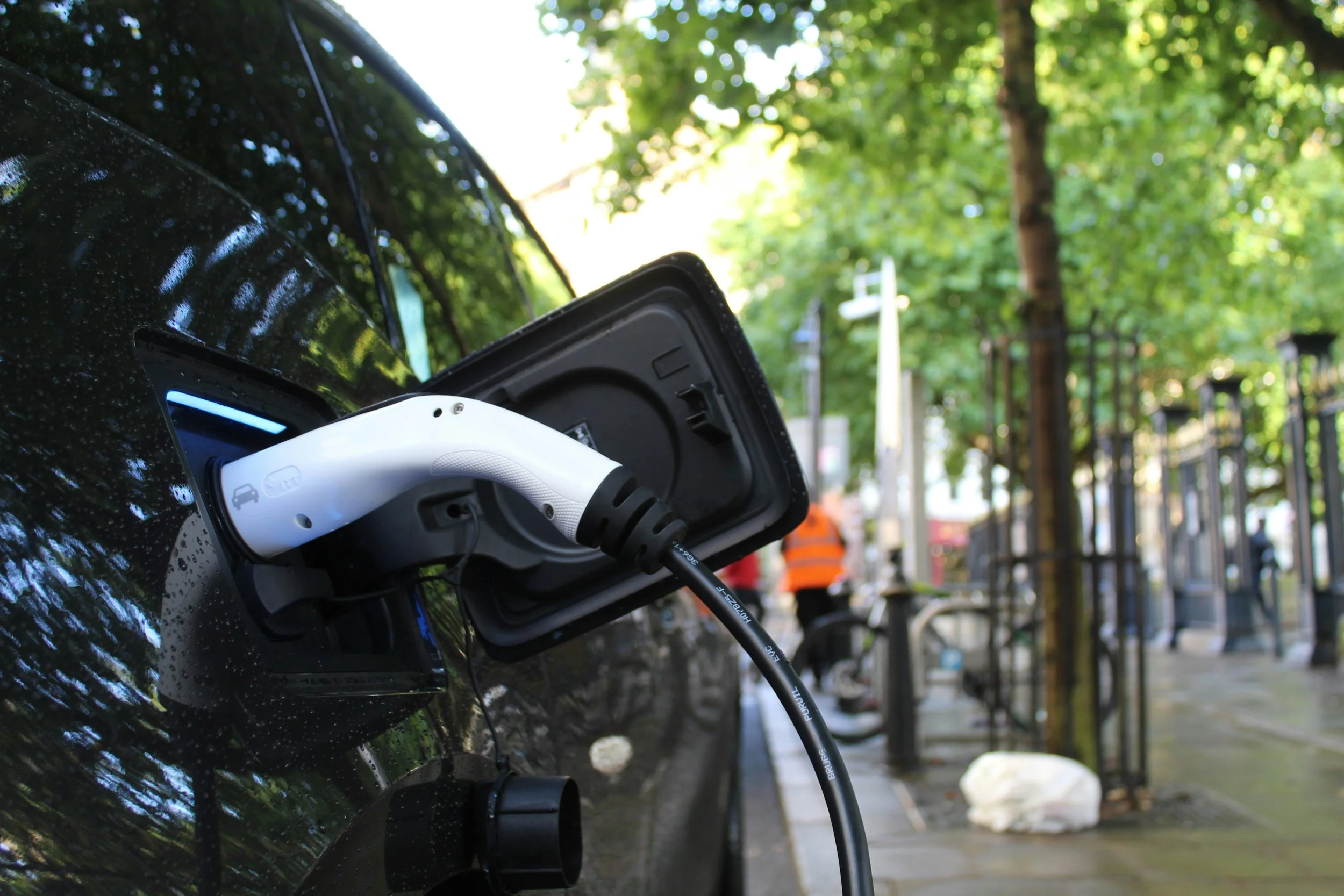Electric vehicles (EVs) are reshaping transportation by reducing pollution, cutting fuel costs, and accelerating the shift away from fossil fuels. For communities working toward sustainability, energy resilience, or climate goals, expanding publicly accessible EV charging is a critical strategy.
Yet, as we work with communities, a question often arises: If many EV owners can charge at home, why invest in public charging stations?
The answer: public charging isn’t redundant — it’s essential. A strong public charging network ensures equitable access, supports plug-in hybrid drivers, boosts the local economy, and speeds up EV adoption.
1. Public Charging Provides Essential Access for Residents Without Home Charging
Not all residents can plug in at home. A large percentage of Americans live in multi-family buildings or rental properties that lack the ability—or permission—to install Level 2 chargers. Even among single-family households, renters and lower-income drivers may face cost or lease barriers to home charger installation.
Roughly 41% of people in major U.S. metro areas live in multi-family housing, where dedicated charging is often unavailable.
Only about 22% of U.S. EVs are estimated to have dedicated overnight charging access at home, meaning the majority rely on public or workplace charging.
In a recent survey, 56% of potential buyers expressed concern about the lack of public charging, and over 27% indicate they wouldn’t be able to install home chargers.
Public charging infrastructure is a prerequisite for equitable EV adoption. Without it, EV ownership becomes feasible only for homeowners with driveway access—excluding a substantial portion of residents.
2. Public Charging Helps Plug-In Hybrids Maximize Electric Miles
Plug-in hybrid electric vehicles (PHEVs), which combine gasoline engines with batteries providing 20–50 miles of electric range, are an important bridge to fully electric transportation. But their environmental benefits depend on frequent charging. Daytime public charging—especially near workplaces, shopping areas, and civic centers—allows PHEV drivers to recharge regularly and operate on electricity more often.
According to the U.S. Department of Energy, public and workplace charging significantly increase the share of PHEV miles driven using electricity, reducing gasoline use and emissions. Studies confirm that daytime charging access substantially boosts electric-mile share, making PHEVs much cleaner in practice.
More public charging = more electric miles = lower emissions today, even before full EV adoption.
3. Public Charging Attracts Visitors and Supports Local Businesses
EV drivers frequently choose their travel routes and stops based on charger availability. Unlike a 5-minute gas stop, a charging session—even at fast chargers—takes 20+ minutes, often encouraging drivers to shop, eat, or explore nearby businesses. As one industry report puts it: “No charger, no visit.”
Real-world data show the economic upside:
A California study found that adding even one charger increased local business revenue by about 1.4% per year.
Businesses within 100 meters of the charger saw a 2.7–3.2% increase in spending. This underscores how well-placed public chargers have been shown to increase foot traffic and help turn commercial areas into thriving community hubs
By placing chargers thoughtfully in commercial districts, downtowns, and near recreational areas, communities can increase foot traffic and position themselves as EV-friendly destinations.
4. Public Charging Accelerates EV Adoption and Builds Long-Term Resilience
Charging availability strongly influences consumer confidence. The next wave of EV owners will include more renters, apartment dwellers, and first-time EV buyers who may not have home charging or may still have concerns about “range anxiety.” According to policy research, “access to reliable, affordable, and convenient charging is a leading factor in the decision to buy or lease an EV.”
Communities that have invested in charging are already seeing results:
In New York City, after public chargers expanded significantly, public charging use increased by 83% in the first half of 2022, and EV adoption rose accordingly.
A broad, visible charging network signals community readiness for the clean transportation future, encouraging adoption and supporting long-term climate goals.
The Bottom Line: It’s not “home charging or public charging”—a thriving EV future depends on both.
Public charging is not an optional add-on to home charging—it’s a foundational component of a successful EV strategy. It:
Expands access for residents without home charging
Enables PHEVs to reduce gas use and emissions
Drives local economic activity
Accelerates EV adoption and future-proofing
By investing in public EV charging stations now, communities ensure that electric mobility is accessible, equitable, and economically beneficial—while positioning themselves as leaders in the clean-energy transition.
Additional Sources:
U.S. Department of Energy – Alternative Fuels Data Center (AFDC), “Charging Electric Vehicles in Public”
World Resources Institute, “Many US Communities Face EV ‘Charging Deserts.”
U.S. Department of Transportation – Benefits to Communities (Rural EV Toolkit)
AAA Consumer Survey (2025), “Americans Slow to Adopt Electric Vehicles”
National Renewable Energy Laboratory (NREL), “Emissions Associated with EV Charging”
FLO (EV charging company) Insights, “How public EV charging stations are powering up communities”
The paleBLUEdot team provides a wide range of expert consultant services supporting community resilience, including Climate Action Planning, Sustainability Consulting, and Renewable Energy Planning.

